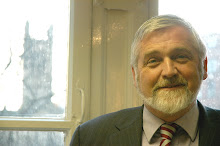How many academic librarians does it take to change a light bulb?
Just five. One changes the light bulb while the other four form a committee and write a letter of protest to the Dean, because after all, changing light bulbs IS NOT professional work!
How many catalogers does it take to screw in a light bulb?
Just one, but they have to wait to see how LC does it first.
How many cataloguers does it take to change a lightbulb?
Only one provided it is in AACR2. How many reference librarians does it take to change a light-bulb?
(with a perky smile) "Well, I don't know right off-hand, but I know where we can look it up!"
How many reference librarians does it take to change a lightbulb?
None if it has a LCSH heading.
How many library system managers does it take to change a lightbulb?
All of them as the manual was lost in the last move (or flood).
How many library managers does it take to change a lightbulb?
At least one committee and a light bulb strategy focus meeting and plan.
How many library technicians does it take to change a lightbulb?
Seven. One to follow approved procedure, and six to review the procedure. (8 if you count the librarian they all report to)
